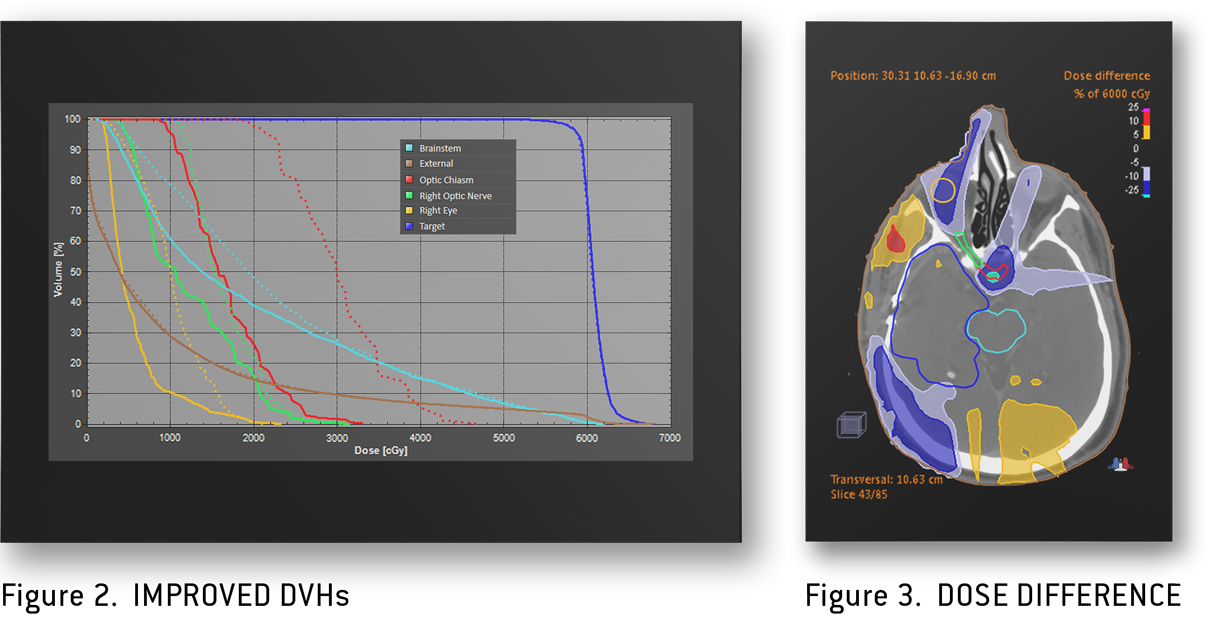Use reduce organ at risk dose for even more precision
Reduce organ at risk dose enables treatment planners to consistently reach plans that cannot be improved.
Reduce organ at risk dose enables treatment planners to consistently reach plans that cannot be improved.
A unique one-click post-processing method is applied after conventional planning
Once a plan satisfies clinical goals, other aspects can often still be improved. RayStation simplifies improvements with the reduce-organ-at-risk-dose feature – a one-click post-processing functionality that can easily be applied after conventional planning. It enables treatment planners to consistently reach plans that cannot be improved.
This unique functionality is designed to reduce the dose to the organs at risk in an existing plan while maintaining target coverage and dose homogeneity within target structures. It pushes the solution to a point at the Pareto surface and assures that the solution is Pareto optimal so the dose to an organ at risk cannot be reduced without increasing dose to at least one other organ at risk, reducing target coverage or target homogeneity.
This optimization functionality is available for TomoTherapy, VMAT, IMRT and PBS in RayStation.
Download our whitepaper to learn more.


Figure 1. ADMISSIBLE DVHs
The shaded regions illustrate the admissible DVHs for a target (blue) and an OAR (red).
Figure 2. IMPROVED DVHs
The DVHs of a brain case for the plan resulting from Reduce OAR dose (solid) and the reference plan (dotted). The target coverage is almost identical in all plans, but the OAR doses are much improved by Reduce OAR dose.
Figure 3. DOSE DIFFERENCE
Dose difference (reduced – reference) in a transversal slice. Blue fields represent regions where the dose has been reduced.
Fill in your information and the document will be sent to you.
Your data is handled with discretion, read our privacy statement
